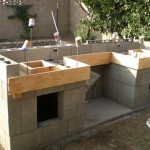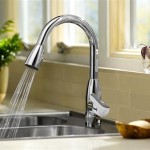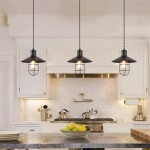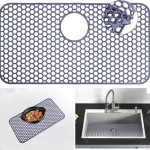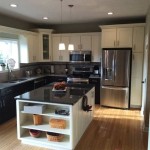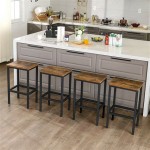Backsplash Glass Tile For Kitchen: A Comprehensive Guide
Kitchen backsplashes serve a dual purpose: protecting the walls from splatters and spills while simultaneously enhancing the aesthetic appeal of the kitchen. Among the myriad of materials available for backsplashes, glass tile stands out for its versatility, durability, and visual impact. This article provides a comprehensive overview of glass tile backsplashes for kitchens, covering the various types, benefits, installation considerations, and maintenance requirements.
Glass tile has gained significant popularity in kitchen design due to its ability to reflect light, creating a brighter and more spacious feeling in the room. Its glossy surface is easy to clean, resisting stains and moisture effectively. The material is available in a wide range of colors, shapes, and sizes, offering homeowners extensive design possibilities. This makes glass tile a suitable option for diverse kitchen styles, from contemporary minimalist designs to more traditional settings.
The use of glass in the kitchen isn’t purely aesthetic. The inherent non-porous nature of glass offers practical advantages. Unlike natural stone or ceramic tile, glass does not readily absorb liquids or harbor bacteria. This inherent resistance makes glass tile a hygienic choice for an area prone to splatters from food preparation and cooking.
Types of Glass Tile
Glass tile encompasses a broad category with various sub-types, each possessing unique characteristics and applications. Understanding these differences is crucial for selecting the appropriate glass tile for a kitchen backsplash.
Clear Glass Tile: This type of tile allows light to pass through, creating a luminous effect. It is often installed over a painted surface to create custom color palettes. Clear glass tiles are typically thinner than other types and require careful installation to avoid visible imperfections underneath.
Frosted Glass Tile: Frosted glass tile has a textured surface, which diffuses light and provides a softer, more muted appearance. This type of tile is excellent for adding a touch of elegance and sophistication to a kitchen without the high sheen of clear glass. Frosted glass is less prone to showing water spots and fingerprints compared to its clear counterpart.
Recycled Glass Tile: Made from post-consumer or post-industrial glass waste, recycled glass tile is an environmentally conscious option. These tiles often have a unique texture and color variation due to the diverse origins of the recycled materials. Using recycled glass contributes to sustainable building practices and reduces landfill waste.
Colored Glass Tile: Colored glass tile is manufactured by adding pigments to the glass during the melting process. This results in a vibrant and consistent color throughout the tile. Colored glass offers a broad spectrum of hues, enabling homeowners to match the backsplash to their existing kitchen décor or create a bold contrasting accent. The color vibrancy remains consistent over time, resisting fading from exposure to sunlight.
Glass Mosaic Tile: Glass mosaic tile consists of small pieces of glass arranged on a mesh backing. This format offers intricate patterns and designs, allowing for complex and visually stunning backsplashes. Glass mosaics can be used to create murals, borders, or full backsplash coverings, offering a high degree of customization. The small size of individual tiles facilitates installation on curved surfaces or around obstacles.
Advantages of Glass Tile Backsplashes
The selection of glass tile for a kitchen backsplash is often based on a combination of aesthetic appeal and practical benefits. The material offers several advantages over other backsplash options.
Aesthetic Versatility: Glass tile is available in a vast array of colors, sizes, shapes, and finishes. This extensive selection allows homeowners to create a backsplash that perfectly complements their kitchen design. Whether a modern, minimalist aesthetic or a traditional, rustic style is desired, glass tile can be adapted to suit the design parameters. The reflective properties of glass can also enhance the overall brightness and spaciousness of the kitchen.
Easy Maintenance: The non-porous surface of glass tile makes it exceptionally easy to clean. Most spills and splatters can be wiped away with a damp cloth and mild detergent. The inherent resistance to stains and moisture prevents the growth of mold and mildew, making glass tile a hygienic choice for the kitchen environment. Minimal maintenance requirements contribute to the long-term appeal and practicality of glass tile backsplashes.
Durability and Longevity: Glass tile is a durable material that can withstand the rigors of a kitchen environment. It is resistant to scratches, stains, and fading, ensuring that the backsplash maintains its appearance for many years. Properly installed glass tile can last for decades with minimal upkeep. The material's resistance to thermal shock makes it suitable for use behind cooktops and ovens.
Light Reflection and Visual Appeal: One of the most significant benefits of glass tile is its ability to reflect light. This amplifies the natural and artificial light in the kitchen, creating a brighter and more inviting space. The reflective surface adds depth and dimension to the backsplash, enhancing the overall visual appeal of the kitchen. This is particularly beneficial in kitchens with limited natural light or smaller spaces.
Installation Considerations for Glass Tile Backsplashes
Proper installation is crucial for ensuring the longevity and aesthetic appeal of a glass tile backsplash. Several factors must be considered during the installation process to achieve a successful outcome.
Surface Preparation: The surface onto which the glass tile will be installed must be clean, dry, and level. Any existing imperfections or unevenness should be addressed before beginning the installation. A thin layer of backer board may be necessary to create a smooth and stable surface. Proper surface preparation ensures that the glass tile adheres properly and prevents cracking or shifting over time.
Adhesive Selection: Choosing the right adhesive is critical for glass tile installation. A white or translucent thin-set mortar is generally recommended to prevent the adhesive from showing through the glass. The adhesive should be specifically designed for use with glass tile and meet the manufacturer's recommendations. Applying the adhesive evenly and in the correct thickness is essential for proper adhesion.
Cutting and Shaping: Glass tile requires specialized tools for cutting and shaping. A wet saw with a diamond blade is typically used to achieve clean, precise cuts without chipping or cracking the glass. Care should be taken to avoid applying excessive pressure during cutting. For intricate shapes or curves, a glass tile nipper may be used to gradually remove small pieces of glass. Safety glasses and gloves should be worn during the cutting process to protect against glass shards.
Grouting and Sealing: Grouting is an essential step in the installation process, filling the gaps between the tiles and providing a waterproof seal. A non-sanded grout is generally recommended for glass tile to prevent scratching the surface. The grout should be applied evenly and excess grout removed promptly. After the grout has cured, a sealant should be applied to protect the grout from stains and moisture. Regular cleaning and resealing of the grout lines will help to maintain the appearance and longevity of the backsplash.
Professional Installation: While DIY installation is possible, hiring a professional tile installer is often recommended, particularly for complex designs or challenging installations. Professional installers have the experience and expertise to ensure that the glass tile is installed correctly and efficiently. They can also provide guidance on selecting the appropriate materials and addressing any potential issues that may arise during the installation process.
Careful planning and execution are key to a successful glass tile backsplash installation project. Considering the type of glass, surface preparation, adhesive selection, cutting techniques, and grouting procedures will contribute to an eye-catching and durable backsplash that enhances the kitchen's aesthetics and functionality for years to come.
The use of specific tools like wet saws for cutting and non-sanded grout helps avoid damage to the delicate glass surfaces during and after the installation process, contributing to a backsplash that’s both visually stunning and built to last. Proper installation not only enhances the aesthetic appeal but also the functional longevity of the glass tile backsplash.
Ultimately, the choice of glass tile for a kitchen backsplash represents a marriage of form and function. Its aesthetic versatility allows for seamless integration with various kitchen designs, while its inherent durability and ease of maintenance ensure a hygienic and long-lasting solution for wall protection behind cooking surfaces and sinks. By carefully considering the different types of glass tile available and adhering to proper installation practices, homeowners can create a stunning and practical backsplash that enhances the beauty and value of their kitchen.

Bodesi Deep Ocean 3 In X 12 Glass Tile For Kitchen Backsplash And Showers 10 Sq Ft Per Box Hp Do 3x12 The Home

Glass Tile For Backsplashes Showers More The Shop

Art3d 32pcs 3 X 6 Peel And Stick Backsplash Glass Tiles For Kitchen Bathroom White Wall 4 Sq Ft

5 Beautiful Glass Tile Backsplash Ideas Arizona
Glass Mosaic Tile Backsplash Ideas

10 Glass Tile Kitchen Backsplash Ideas 2025 The Shiny Ones

Timeless Glass Tile Backsplashes That Never Go Out Of Style

Stained Glass Kitchen Splashback Heat Resistant 6mm Toughened Printed Backsplash Tile Cooker Panel Etsy

Bring Your Boring Space To Life With Discount Glass Tile Kitchen Backsplash

Glass Tile Backsplashes North American Stone Blog

